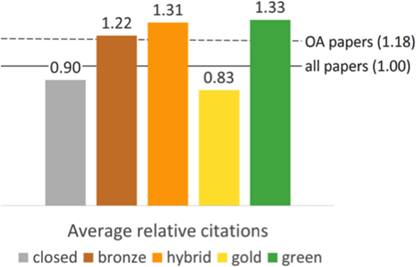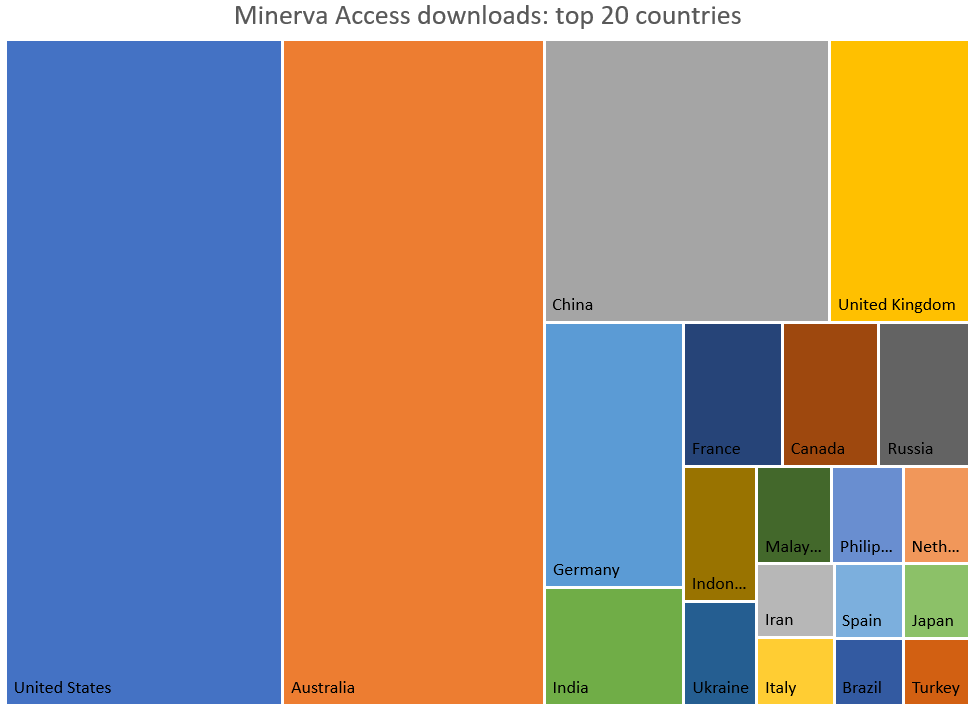
Thing 03: Maximising Research Visibility Through Open Access
In response to the current COVID-19 crisis, a lot of research formerly locked behind paywalls has been made available freely. But open scholarship shouldn’t rely on a pandemic – whether you already have publications, or are planning to publish, making your work available through open access may help with increased discoverability and wider dissemination. In this post, Dimity Flanagan outlines some benefits of open access, and how you can make it work for you.
Getting started
Before you start thinking about your research dissemination strategy, ask yourself: who is my audience? Who do I want to read my research? Where do these groups search for information? Open access – that is, making your research outputs freely available – may be the answer. In fact, open access should be viewed not as an administrative burden but as a vital part of your research dissemination strategy.
While many universities offer access to thousands of academic journals and monographs, such privileged access to information is not a reality for most people – not if you’re an independent scholar, a school teacher, a policy maker, an architect, an NGO worker, a business owner, a journalist… the list goes on. Research impact is more than your citation count; it is about providing research to influence change. There is also increasing evidence that pursuing open access leads to a citation advantage when comparing different access types, as illustrated by a random sample of Web of Science articles and reviews with a DOI published between 2009 and 2015:

Types of open access explained
| Closed | Article is behind a paywall |
| Bronze | Article is free to read but copyright is all rights reserved |
| Hybrid | Author pays to make article OA in a subscription (paywalled) journal |
| Gold | Author publishes article in an OA journal, under an OA license such as CC-BY |
| Green | Author makes their accepted manuscript available in a repository |
For more information on the above types of open access, see the 2017 “Things” post on Open Access – Green, Gold and Black?
That Thing you do: integration into practice
Stages of sharing
Pre-publication
If you’re at the pre-publication stage of your work, preprint servers offer a way to share your publication while it is still in progress, before it is formally published in a journal. Preprint servers are often subject to disciplinary norms. For physicists, arXiv has been serving their needs since the early 1990s, ensuring research is disseminated as rapidly as possible and encouraging feedback and collaboration. arXiv now serves a wider range of disciplines such as mathematics and computer science and provides access to over one million papers. Research Papers in Economics (RePEc) is also an early example of researchers leading the way in the promotion of open access. The past few years have seen rapid growth in the number of disciplinary preprint platforms, with bioRxiv and medRxiv being more recent success stories, and providing a vital service during the COVID-19 pandemic.
Publishing open access
When publishing a journal article, you may want to explore the open access journals available in your discipline. The Directory of Open Access Journals indexes quality, open access, peer-review journals published around the world. You can also filter your search to exclude journals that have an Article Processing Charge (APC) if you do not have funds available for publication.
Often when publishing open access, your article (or book) will be released under an open access license such as a Creative Commons license. These licenses permit the redistribution of your work. This makes it easy for you to upload your work to your university repository, personal website, academic social network or anywhere else that can enhance the discoverability of your work.
When it’s not possible to publish in an open access journal
The best journal for your academic audience and career prospects may not be open access. The publisher may offer open access for a fee (hybrid open access) but there are other solutions available that won’t cost you any money, just a little time.
Conversely, if your article is already published, you will likely have signed a copyright transfer agreement. What rights have you retained? You may only be able to do very little with the final published version of your work, but your publisher should allow you to make your accepted manuscript (also called postprint) open access. This version incorporates peer review changes but has not yet been through the proof stage. The accepted manuscript is of great use to a wider audience because it has been through peer review.
Are you a University of Melbourne researcher?
The University of Melbourne expects its researchers to make their accepted manuscripts open access through the University repository, Minerva Access, or an appropriate subject repository. The advantage to using Minerva Access is that there is an expert team working behind the scenes to check copyright permissions. Many journals and book publishers have their policies online, and for policies that cannot be found, the Minerva Access team will contact the publisher directly for permission.
While many researchers are already in the habit of depositing their accepted manuscripts of journal articles into university or subject repositories, it is important to disseminate your other outputs just as widely. Providing access to a book chapter helps promote the entire monograph. Adding copies of reports ensures that if the original falls subject to link-rot, the University repository can be relied upon for long-term access.
Once your content is in Minerva Access, you can see the downloads for your output, and the country in which it is being downloaded. Over 70% of traffic to Minerva Access comes via Google and Google Scholar (including all the various national iterations), so it is highly discoverable across the world. In 2019, Minerva Access content received over 1.5million downloads.
Learn more
- Advice for depositing into Minerva Access: https://minerva.unimelb.edu.au/deposit
- Principles for Open Access to Research Outputs at Melbourne: https://library.unimelb.edu.au/open-scholarship/principles-on-open-access-to-research-outputs
- Open Access Guide: https://unimelb.libguides.com/openaccess
About the author
Dimity Flanagan is the Manager, Scholarly Communications at the University of Melbourne. Dimity has contributed another post on open access publishing, and presents ‘Public Access and Your Thesis’ session for the Researcher@Library Program.
Want more from 23 Research Things? Sign up to our mailing list to never miss a post.
Image Credit: Five bulb lights by Pexels
One more Thing …
You can learn more about maximising your research visibility from this recording of a webinar presented by Thing 3 author, Dimity Flanagan:
Webinar: Seeking the citation advantage: Open Access publishing
Date and time: Wednesday 24 June, 2020 from 10am-11am
Description: A recent study puts the citation advantage
of Open Access articles at 18%. This webinar will dig a little deeper
into the evidence to look at and which types of Open Access are likely
to bring the most benefits. You’ll leave this session with practical
advice on how you can make your past and future research more widely
available.
These online events are a part of Researcher Connect – an online program for University of Melbourne researchers (9 June – 3 July 2020). (Explore more resources)
Want more from 23 Research Things? Sign up to our mailing list to never miss a post.

No comments:
Post a Comment